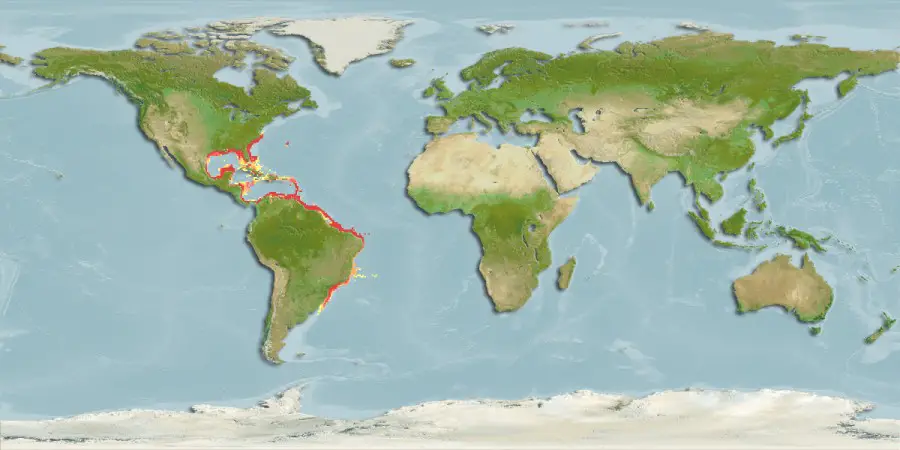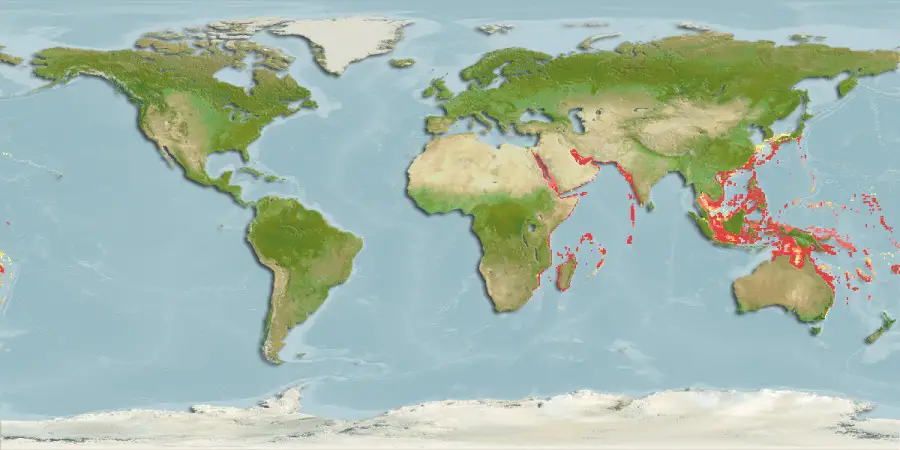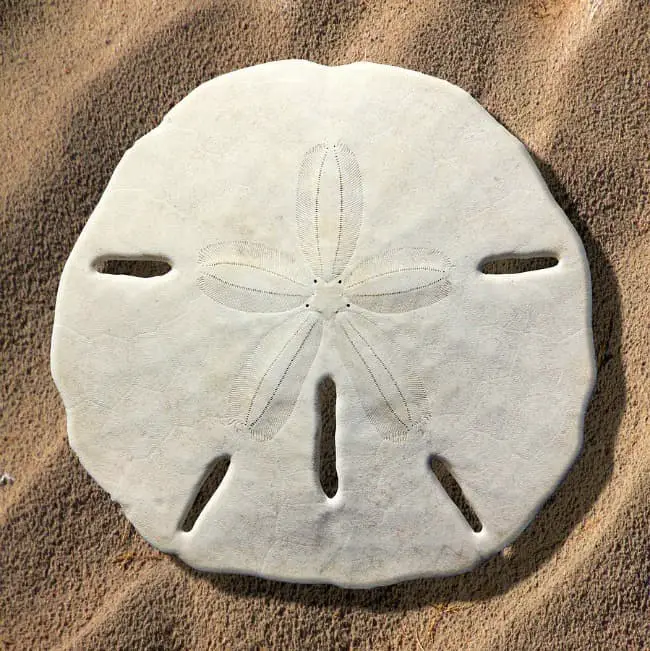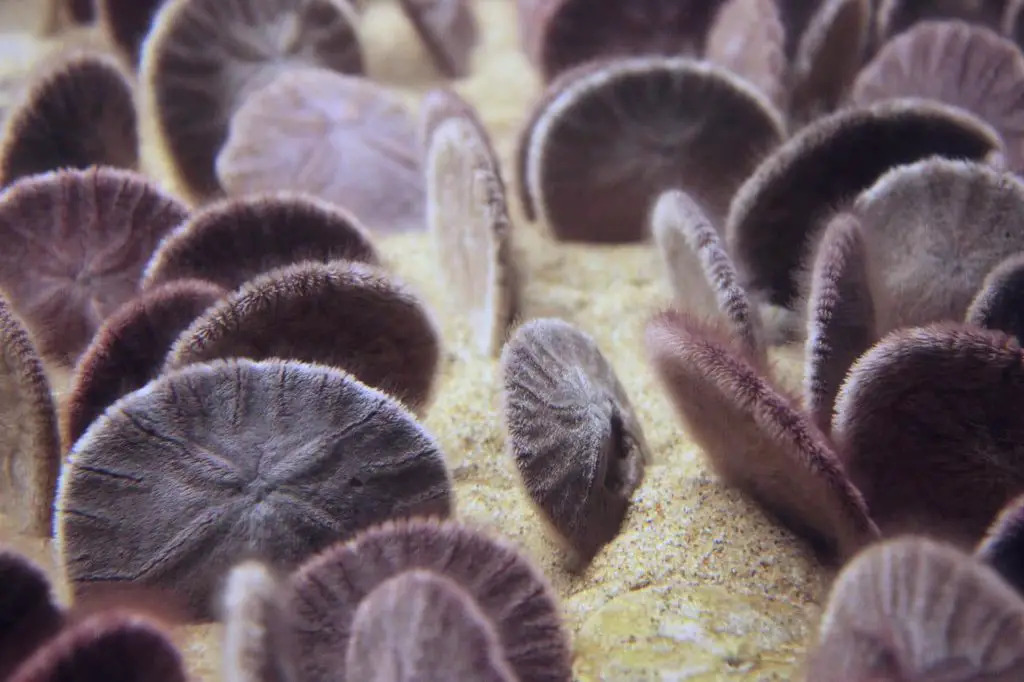Where Are Sand Dollars Found? (Explained)
Sand dollars are incredibly interesting creatures and it always makes me smile when people don’t know they are living animals. I’m always happy to explain everything about them, especially that they actually live in the ocean when alive and that they’re not only the white skeleton most people find on the beach.
Then, a lot of people are curious about where they actually live. If you’re one of them, I’ll be happy to talk all about that in this post. However, let’s start with a quick answer:
Sand dollars are primarily found in tropical coastal regions of the Pacific, Atlantic, and Indian Ocean. They live on sandy and muddy ocean floors mostly in low subtidal zones of protected bays but also in deeper waters up to 40m (131 feet).
This certainly doesn’t tell the whole story and in this post, I’ll explain more about in what geographic range they are found, what’s their habitat, and how to find them on the beach. Read on!
Sand dollars geographic range
You can find non-harmful sand dollars nearly worldwide, primarily in tropical coastal regions. They live in warm seawaters of the Pacific, Atlantic, and the Indian Ocean. You can’t find them in Europe or Antarctica. The particular location of sand dollars may differ depending on species and conditions. Some species live up to 10 years and live across wide regions but others occupy just small areas.
The most common sand dollars (Echinarachnius parma) are often found in the North Pacific and Northwest Atlantic oceans. They primarily occur on the North American east coast from New Jersey north. They are also found in Alaska, Siberia, British Columbia, and Japan.
Sand dollars of the genus Mellita are very often found on the Atlantic coasts of America. They range from Caribbean islands like Jamaica, Puerto Rico, to the southern areas of the United States in Florida. Their range includes Brazil, Bermuda, Mexico, and Costa Rica.

Another popular species, known for their unique feeding habits – Eccentric sand dollars (Dendraster excentricus) – are mostly found in the Pacific Ocean from Alaska to Baja California. Their feeding strategy is called suspension feeding. They are able to flip onto their front edge and by “standing” vertically, they grab tiny bits of food. It’s quite unique for sand dollars and if you’re interested in reading more about how sand dollars eat, you can read my other blog post here.

Echinodiscus auritus is a common species in the Indo-Pacific Ocean, located on the east coast of Africa, Japan, and Australia.

Sand dollars habitat
Sand dollars live on sandy and muddy ocean floors. They use their spines to burrow in the sand where they protect themselves and seek food.
How deep do sand dollars live
Sand dollars mostly prefer the low subtidal zones in protected bays. This zone is only exposed during low tides and has the greatest biodiversity and is home to many organisms that can’t tolerate air exposure for too long. They may also be found in deeper waters up to 40 m (131 feet) without any seagrass or underwater vegetation as they prefer to bury in the sand.
However, sometimes the conditions for sand dollars can be very extreme, and strong currents bring them too close to the shore. When they reach the beach, they can’t live without the water for long and they are being dried out by the sun.
What happens to sand dollars when they die is that their spines start falling off leaving only their skeletons (called tests). Next, when they’re washed up to the shore, the sun bleaches their color turning it into silver-white. This is usually how the sand dollar looks like when you find it on the beach.

Water salnity
These marine creatures live in saltwater, however, studies show that some species occur in estuarine habitats. This is where salty water from the ocean mixes with water from the land like river mouths, lagoons, and bays. What’s important, the water needs to contain a certain level of salinity in order to fertilize sand dollars’ eggs.
Behavior
Sand dollars’ most characteristic feature is their spines that help them to move, bury themselves in the sand and eat. If you want to find out more about how sand dollars move, you can read my other blog post where I wrote all about that.
These marine creatures mostly eat detritus (dead particulate organic material), planktons, crustacean larvae, and debris from the seafloor that they grind up with the teeth inside of them. This is why the sand is their home and where they find plenty of food. If you’re more interested in that, I wrote another blog post about what sand dollars eat.
Sand dollars are usually crowded together and half-buried in the sand. There can be as many as 625 of them in 0.85 square meters ( one square yard). Staying in the group helps them reproduce in the future by broadcast spawning. This is a common form of sexual reproduction for many marine invertebrates. During this process, several females release their eggs and several males release their sperm into the water column, all at the same time. With this method, billions of gametes (sperm and egg combination) are spewed into the water, increasing the likelihood that eggs will be successfully fertilized.

How to find sand dollars on the beach
If you’re wondering where and when is the best place to find sand dollars skeletons washed up on the beach, there are a few tips you may find useful.
As I mentioned above, sand dollars are often washed away by the strong current and tides so find the area with big tide differences. Go there during a low tide and search sand dollars near the area just below the high-tide line. It may be even more possible to spot them if the night before there was a storm. The conditions for sand dollars were then even more difficult to survive.
Search for silver-white skeletons with a flower-like shape on them (they look like large silver dollars, which is why we call them sand dollars). If you find a living sand dollar with a color ranging from dark brown to purplish-red, make sure you return it to the ocean as quickly as possible. Sand dollars can’t survive without the water for longer than a few minutes.
If you’re not sure if a sand dollar is alive or dead, you can see my other post explaining the difference in detail.
If you see sand dollars in the water or buried on the seafloor, better don’t pick them up as they’re probably alive and trying to hide in the sand. Remember that we should not touch anything in the ocean (and any other wild animals) because it can be very harmful to them. We can transfer our human bacteria, leaving animals susceptible to disease.
You may also like:

Welcome to Bubbly Diver!
I’m glad to see you here. This blog is created for all marine creature lovers by a bubbly diver - me, Dori :)


